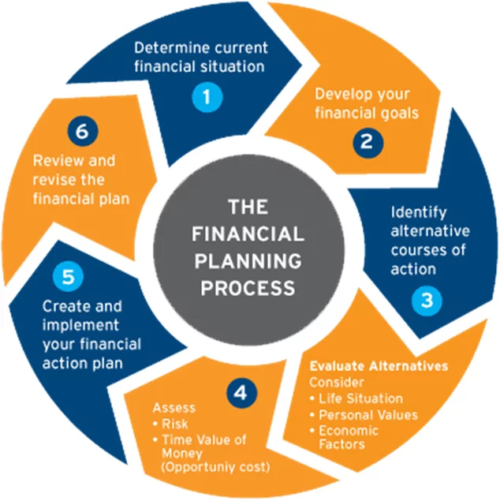Our financial planners will work with you to determine your goals and objectives and to establish appropriate plans for your unique situation following this proven planning process.
Step 1: Gather Information and Determine Your Current Situation
In this first step of the financial planning process, the financial planner will help you determine your current financial situation with regard to income, savings, living expenses, and debts. Preparing a list of current asset and debt balances and amounts spent for various items gives you and your financial advisor a foundation for financial planning activities.
Step 2: Develop Goals
This includes identifying what you want to achieve, how you feel about money and risk and why you feel that way. The purpose of this analysis is to differentiate your needs from your wants. Specific financial goals are vital to financial planning. Others can suggest financial goals and activities for you; however, only you can decide which goals to pursue.
Step 3: Identify and Evaluate Alternatives
Developing alternatives is crucial for making good decisions. Creativity and flexibility in decision making is vital to effective choices. Considering all of the possible alternatives will help you make more effective and satisfying decisions. Possible courses of action should take into consideration your life situation, personal values, expected benefit, economic conditions, etc. Each decision may eliminate other alternatives. Decision making will be an ongoing part of your personal financial planning process. Thus, you will need to consider the lost opportunities that may result from each decisions.
Step 4: Assess Risk
Uncertainty is a part of every decision. Some decisions involve high degree of risk, while other decisions involve a very low degree of risk. Additionally, each us us perceives risk differently. In many financial decisions, identifying and evaluating risk is difficult. The best way to consider risk is to gather information based on your experience, the experiences of others and to leverage other available resources. It can also be useful to consider risk on a relative vs absolute basis.
Step 5: Create and Implement Your Plan
In this step of the financial planning process, you will develop an action plan. This requires choosing ways to achieve your goals. As you achieve your immediate or short-term goals, the goals next in priority will come into focus. To implement your financial plan, you may need assistance from others. For example, you may use the services of an insurance agent to purchase property insurance or the services of an investment broker to purchase stocks, bonds, or mutual funds.
Step 6: Review and Revise Your Plan Periodically
Financial planning is a dynamic process that does not end when you take a particular action. You need to regularly assess your financial decisions. Changing personal, social, and economic factors may require more frequent assessments.

